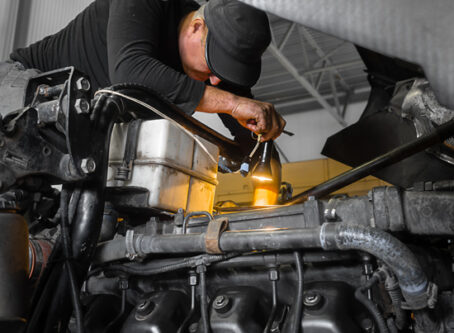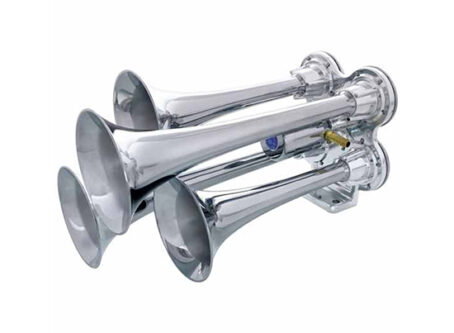Statehouse bills call for speed limit changes
Speed limit rules are a topic of conversation at statehouses around the country. Legislation includes the elimination of speed limit differentials for cars and trucks and increased speeds for all vehicles.
The Owner-Operator Independent Drivers Association says roadways are safest when all vehicles are allowed to travel at the same rate of speed. The Association does not advocate for a specific speed limit.
Indiana
Time is short for an Indiana bill to advance that would do away with the speed limit differential on the state’s fastest roadways.
Indiana law allows cars to drive 70 mph on rural interstates while vehicles in excess of 26,000 pounds are limited to 65 mph.
The Senate acted earlier this year to advance a bill to end speed limit differentials in the state.
Sen. Jim Tomes, R-Wadesville, has said it simply makes sense to adopt uniform speeds for all vehicles.
“The logic behind it is if everyone is flowing at the same speed, traffic moves better and you don’t have people stacking up on each other getting behind a slower-moving vehicle,” Tomes previously told a Senate committee. “I’m thinking this makes sense to let these trucks run even speed with cars and pickup trucks.”
Deadline approaching
Andrea Zimmerman of the Indiana Department of Transportation has provided information to lawmakers about a joint research study by the agency and Purdue University on speed limits. The study suggested uniform 70 mph speeds would reduce crash frequencies in the state by about 20%.
The Indiana Motor Truck Association, however, opposes the rule change. The group has said it is important to resist the urge to drive faster.
Since its Feb. 20 passage in the Senate on a 42-5 vote, SB13 has sat in the House Roads and Transportation Committee. Four committee hearings have come and gone without consideration of the bill.
The deadline for Senate bills to advance from the House is April 17.
OOIDA supports pursuit
Doug Morris, OOIDA director of safety and security operations, says that speed differentials are based on a flawed belief that slower trucks equal safer trucks. He adds that is simply not the case.
While the Senate appears to be more educated on the issue than their House counterparts, Morris said “old politics” are likely to disrupt the effort once again. He cites leadership that is opposed to the idea instead of learning about the issue.
OOIDA continues to call on truck drivers to make their voices heard on the issue with their state representatives.
North Dakota
In North Dakota, Gov. Doug Burgum has swatted away a bill to increase speed limits for all drivers along certain highways.
State law authorizes speeds of 75 mph on Interstates 29 and 94. Speeds along four-lane divided highways are set at 70 mph. Two-lane highways are posted at 65 mph.
The legislature approved a bill that would authorize vehicles to travel 80 mph on interstates. House lawmakers approved the bill on a veto-proof 65-29 vote. The Senate followed suit with a 25-21 vote.
The governor, however, vetoed HB1475 citing safety concerns.
“Increasing the maximum speed limit on interstate highways increases both the risk of speed-related crashes and the potential severity of such crashes,” Burgum wrote in his veto message.
He also cited a study by the Insurance Institute of Highway Safety that found a 5-mph increase in the speed limit is associated with an 8.5% increase in fatality rates on interstate highways and freeways.
“This increased risk runs counter to the goals of vision zero, North Dakota’s multiagency effort to eliminate fatalities and serious injuries caused by motor vehicle crashes.”
Advocates at the statehouse said the change would allow for more efficient travel through the state. Rep. Ben Koppelman, R-West Fargo, reported that six nearby states already permit 80 mph travel.
HB1475 allowed the North Dakota Department of Transportation to retain the ability to adjust the speed limit in areas of concern.
A veto override pursuit ended Monday, April 3, when House lawmakers failed to keep the margin necessary.
Montana
A Montana bill would give the state’s Transportation Commission full authority to change speed limits throughout the state.
The state has an 80-mph speed limit for cars and a 70-mph limit for trucks on rural interstates. State law allows the commission to lower or to leave unchanged speed limits.
Sponsored by Sen. Barry Usher, R-Laurel, SB452 would add the authority to raise speed limits.
Dustin Rouse, Montana Department of Transportation highways and engineering administrator, testified at a recent hearing on the bill that during a speed differential review it was determined that split speeds can be problematic.
“One of the things we found is in locations that have high large commercial vehicle, semi use, that mix if you have that speed differential can lead to an increase in crashes.”
He said the state DOT acted in 2019 to address safety concerns resulting from the speed differential on U.S. 212 between Crow and the Wyoming line. As a result of a safety review, the speed limit for cars was lowered from 70 mph to 65 mph to match the truck speed limit.
Usher added there are roads around the state that need to have speed limits modified.
“Our Department of Transportation, their goal is to be safe, but it’s also to keep commerce moving,” he said.
Morris said it is commendable Rouse educated lawmakers on the “real-world issues related to speed differentials.”
The House Transportation Committee voted unanimously last week to advance the bill. SB452 next heads to the House floor. If approved there, it would move to the governor’s desk. The Senate already approved it on a 33-17 vote.
New York
New York permits all vehicles to travel 65 mph on interstate highways and other limited access roads.
Pursuits in the Assembly and Senate would authorize speeds for cars and trucks to increase to 70 mph. Specifically, the state DOT and the New York Thruway Authority would be permitted to implement the change.
Sen. Tom O’Mara, R-Big Flats, wrote in a bill memo the change would keep New York in line with maximum speeds in many other states.
“The majority of states across the country have state speed limits that exceed 65 mph,” O’Mara wrote. “New York has failed to keep up with the rest of the country by not adopting a more efficient speed limit.
“This bill would correct this inefficacy by allowing for a 70-mph speed limit where appropriate.”
Both bills, S2209 and A5044, are in their respective transportation committees.
North Carolina
One North Carolina bill would boost the existing 70 mph speed limit on the state’s fastest roadways.
The bill, H386, would authorize the state DOT wo increase the speed limit to 75 mph on any interstate highway or controlled-access highway. The rule would apply to affected roadways inside or outside the corporate limits of a municipality where it is deemed “reasonable and safe” to make the change.
Supporters say many people already are driving above 70 mph. They add that some highways are designed to handle increased speeds.
The bill is in the House Transportation Committee.
Texas
Two Texas bills also cover speed limits.
The House Transportation Committee voted to advance one bill that would authorize the use of variable speed limits.
Variable speed limits use speed limit signs that change to slow drivers to avoid creating heavy traffic congestion. The Texas A&M Transportation Institute provides information on how the process works.
HB1885 would allow the temporary lowering of a speed limit to address inclement weather, congestion, road construction, or any other condition that affects “orderly movement of traffic.”
The bill clarifies that variable speeds must be based on an engineering and traffic investigation Variable speeds could not be set less than 10 mph below the posted speed limit.
A nearly identical bill, HB1639, still in the House Transportation Committee does not include the 10-mph provision. LL









